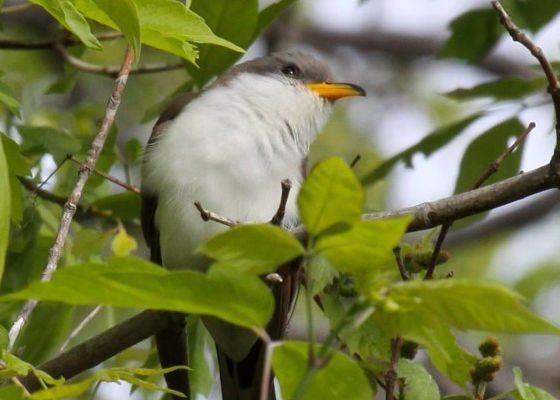
Throw Back Thursday (TBT):
What are “our” birds doing down south while it’s winter up here?
Some of the yellow-billed cuckoos are messing around in Mexico.
Click here for the story from November 2009.
(photo by Chuck Tague)

Throw Back Thursday (TBT):
What are “our” birds doing down south while it’s winter up here?
Some of the yellow-billed cuckoos are messing around in Mexico.
Click here for the story from November 2009.
(photo by Chuck Tague)
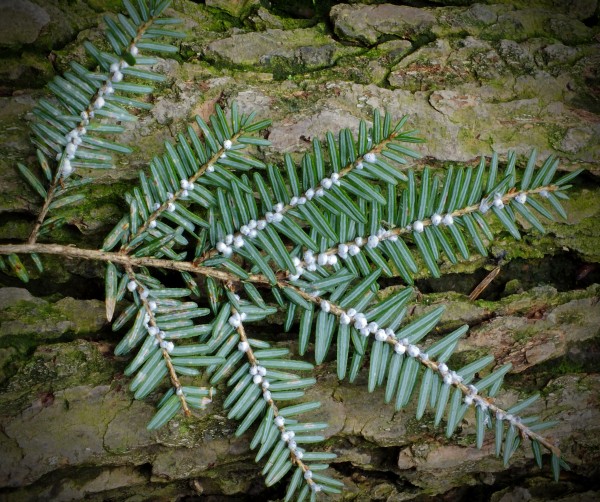
Yesterday I mentioned hemlock woolly adelgid, a really bad invasive insect that’s killing our eastern hemlock forests. It devastated the southern Appalachians (click here to see, here to read) and has moved north into south, central and eastern Pennsylvania. Has it conquered the Allegheny High Plateau? Now’s the best time to find out.
Hemlock woolly adelgids (Adelges tsugae) have no North American predators and a very unusual lifestyle. Originally from Japan, they kill eastern hemlocks in 4-20 years by locking onto the underside of their branches and sucking the lifeblood out of them.
The adults are female, immobile and practically microscopic. Twice a year they reproduce asexually, laying up to 300 eggs a year in woolly white egg sacs that protect their young. The larvae, present in April and July, are the only mobile phase and so tiny that they spread easily on the wind or hitchhike unseen on birds, animals and humans.
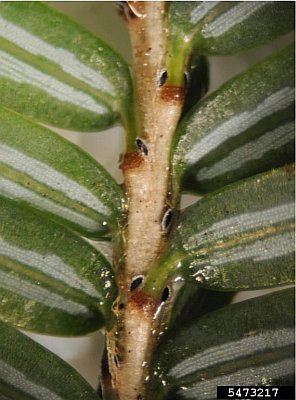
Harsh winters used to protect Pennsylvania’s hemlocks but the climate is warming. Our worst fears were realized when they were found in Cook Forest in March 2013. Last winter’s Polar Vortex reduced that infection 90-100% but the bugs are poised to take off again. Unfortunately the only biological control, a tiny beetle, is even less winter-hardy than the pest so the only way to save our hemlocks right now is by treating individual trees with pesticide. (*)
What trees should be treated? The Nature Conservancy, the U.S. Forest Service and DCNR have teamed up to survey the area from Cook Forest to New York’s Allegany State Park (click on this map to see a larger version).
It’s a big area and they need your help. Don’t worry, it’s easy.
In the winter hemlock woolly adelgid egg sacs are large and visible (see top photo). If you’re in this region — even for a quick hike or birding trip — take a moment to notice the underside of hemlock branches. Birders, you may accidentally find this while looking at a bird.
Report infections by calling or emailing the location to one of the folks on this list of contacts. (Contact any of them and they’ll forward the information if necessary).
Do you need more information before you begin? Contact Sarah Johnson at The Nature Conservancy, sejohnson@tnc.org, 717-232-6001 Ext 231.
Start looking now.
(photo credits:
top photo, wool sacs: Nicholas Tonelli via Wikimedia Commons
middle photo, adults: Ashley Lamb, Virginia Polytechnic Institute and State University, Bugwood.org
map: courtesy The Nature Conservancy and U.S. Forest Service. Click on the map to see a larger version.)
(*) Note: Work is underway to breed winter-hardy biological controls. It just takes time.

18 November 2014
While we brace for 150F this morning and moan that it’s 300F below normal in Pittsburgh, it’s important to look at the bright side.
Last winter’s “polar vortex” put a real dent in invasive insect populations. It reduced the hemlock woolly adelgid population in the eastern U.S. and completely wiped out adelgids in some of the infected stands in Cook Forest. It also killed emerald ash borers and stink bugs.
This one-to-two day cold snap won’t seriously reduce invasive insects but it may zap a few bugs caught unexpectedly outside their lairs. Every little bit helps.
And one more thought in case you aren’t convinced. There are no poisonous snakes in Alaska and very few in Canada and northern-border U.S. states.
Winter is a great pest control system.
p.s. It also reduces human pests. No teenagers are “partying” tonight in the park across the street.
(photo from Wikimedia Commons, Creative Commons license. Click on the image to see the original)
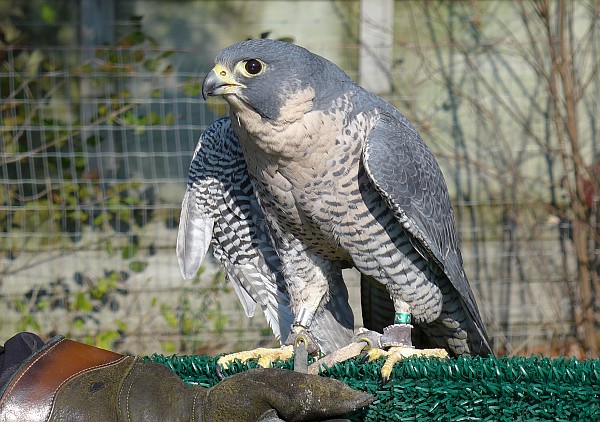
Dorothy, the matriarch peregrine at the Cathedral of Learning, is 15 years old and no longer fertile but she’s fledged 42 youngsters and has many descendants. Last weekend Karen Lang and I traveled to Medina Raptor Center to visit her oldest granddaughter.
Pittstop has lived at the Raptor Center in Spencer, Ohio ever since she was found with an injured wing in North Olmsted on September 12, 2003. Though her injury happened in September, she’d been flying for only two months. She hatched in early June because her parents had had such an eventful spring.
Louie (Dorothy’s son) was only a year old that spring when he fought and killed Boris at the Gulf Tower and left Boris’ body in camera view. After the dust settled Louie and Tasha (a wild-born female who claimed the Gulf Tower in 1998) paired up and laid four eggs. “Pittstop” was born in Pittsburgh and stopped in Ohio when she apparently hit a building.
Here, Annette Piechowski holds Pittstop high while she tells her story. You can see that Pittstop’s wing is not quite right … but that’s not why she’s unreleasable.
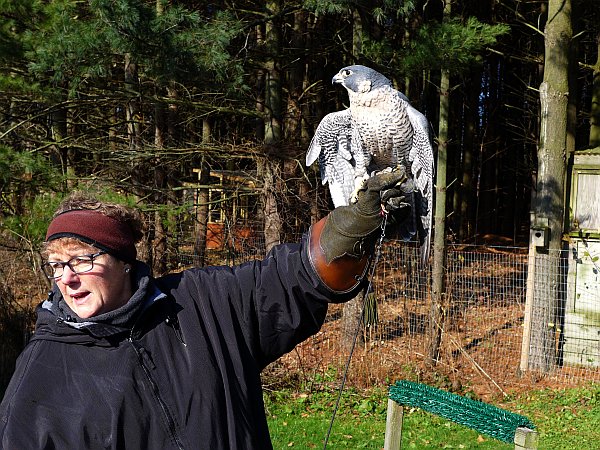
When her wing first healed Pittstop looked good in the flight cage and on the creance cord but she was stopped by incapacitating seizures. They’re related to her injury but no one knows how. Sometimes they’re mild, sometimes grande mal, so she’s on medication to control them. Evidently Pittstop knows when a seizure is coming on. Annette says she gets a faraway look on her face and flies down to the ground before the seizure happens.
Because of the seizures Pittstop does her educational work at the Raptor Center where she can receive immediate attention (and not alarm the public). She’s a great peregrine ambassador. Here she shows her concentration working with Toni McNamara.
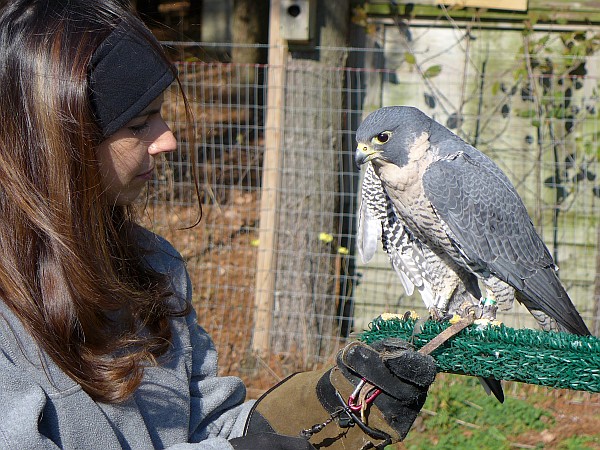
I’ve sponsored Pittstop for many years so I was anxious to see how she’s doing. The last time I saw her she was still in juvenile plumage. Here we had a little reunion.
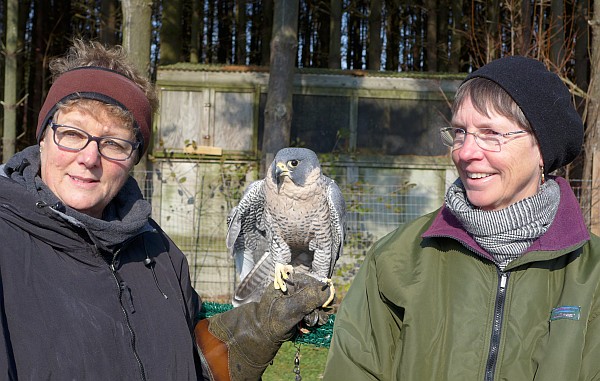
Then Pittstop had a message for me though I couldn’t hear it. (She silently opened her beak.)
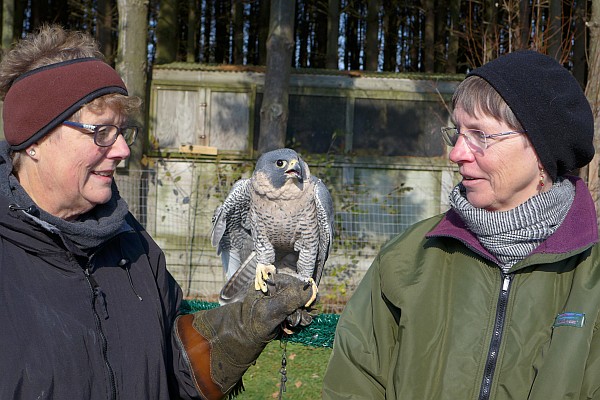
Later Annette Piechowski, Toni McNamara and Jackie Cabonor gave us a great tour of the Raptor Center and showed us the many educational birds: owls, hawks, more falcons and Migisi the bald eagle. I’ll be blogging about these beautiful birds in the near future.
Thank you to Laura Jordan and everyone at Medina Raptor Center for the good work you do for raptors and for taking such good care of Pittstop.
It was great to see Dorothy’s oldest granddaughter.
(photos from Kate St. John’s camera taken by Kate St. John, Toni McNamara and Jacki Cabonor)
This Friday November 21 visit Pitt’s Hillman Library for their Annual Audubon Day, 9:00am to 4:45pm.
This year the event commemorates the passenger pigeon and showcases Audubon’s 1824 passenger pigeon plate, believed to be the only bird he painted in Pittsburgh. Visit Room 363 to see this and more than 24 prints from John James Audubon’s Birds of America.
At 10:00am, in the Amy E. Knapp Room, don’t miss Chris Kubiak’s presentation on the the causes and consequences of the passenger pigeon’s extinction and the controversial effort to revive it through cloning.
Audubon Day is free and open to the public. Call 412–648-8199 or click on the image above for more information.
(photo of John James Audubon’s passenger pigeons, courtesy University of Pittsburgh. Click on the image to see the news release)
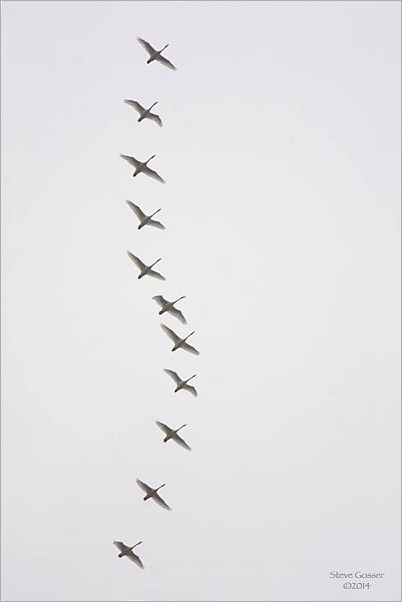
Tundra swans are migrating now over western Pennsylvania. They’re traveling 3,600 miles from Canada’s Northwest Territory and Alaska’s North Slope to Chesapeake Bay and eastern North Carolina.
Steve Gosser photographed this flock on November 12. I saw 60 at Moraine State Park on November 13.
The flocks are composed of families: mother, father and one or two youngsters. In the fall their trip takes about 12 weeks, a slower pace than their springtime return because their “kids” are young and need to rest longer.
Sometimes they’re hard to see. On an overcast day they’re white birds in a white sky so listen for their voices and look up.
Do you know their call? Click here to hear. Start the player at the 6:00 minute mark to hear a flock approach and land at Pungo Lake, North Carolina.
Tundra swans are on the move.
(photo by Steve Gosser)
On Halloween I posted a video showing how crows recognize their enemies. Libby Strizzi wondered, do they recognize their friends? You bet!
In Gifts of the Crow John Marzluff, who conducted the face-recognition experiments at University of Washington, tells how the same American crows that harass the mask-face fly to perch near Lijana Holmes when she arrives on campus. She feeds them a breakfast of eggs and meat every day. It’s not just the food. Crows know who their friends are.
In this video from Germany “Rabenvater” offers treats to hooded and carrion crows and records their antics. He feeds them often (see his many crow videos) and they trust him. Their relationship is so amazing that spectators pause to watch.
Not only do the crows trust him, they’re willing to raid his pocket that holds the treats. Watch at 2:30 as a hooded crow thinks about the pocket and at 3:40 when a carrion crow spends time pulling out the treats and throwing away the peanuts.
Crows recognize their friends.
(YouTube video by Rabenvater)
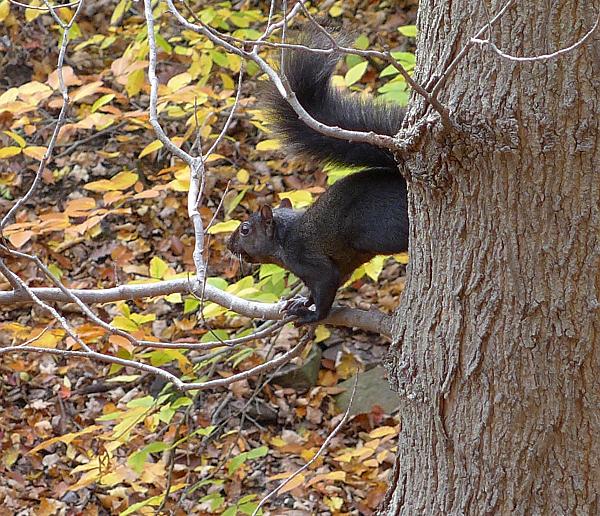
Throw Back Thursday (TBT):
Last month when the leaves changed color I began to notice the many black squirrels in Schenley Park. During the summer they were hidden by leafy shadows but they stand out now among the bare trees and fallen leaves.
Black squirrels aren’t a separate species. They’re just “eastern gray squirrels” (Sciurus carolinensis) that are melanistic. This one isn’t 100% black. He has white whiskers.
Read more about melanism and squirrels in this article from 2010 entitled: This Is A Gray Squirrel.
(photo by Kate St. John)
Last week at the Rio Grande Valley Birding Festival I wanted to see a zone-tailed hawk but the only way to do it was to check every vulture.
The relationship between zone-tailed hawks and turkey vultures goes way back. Both are South and Central American birds who’ve hung out together for longer than we can imagine — so much so that the hawks now resemble the vultures. Turkey vultures moved into North America but the hawks didn’t commit that far, only coming to Arizona, New Mexico and southern Texas in the summer.
Zone-tailed hawks (Buteo albonotatus) like to soar with turkey vultures and they easily blend in. The hawks are slightly smaller, have the same bi-color underwings (dark leading edge and pale trailing edge), and soar with their wings set in a dihedral.
Where I come from a dark, soaring V means vulture so I wouldn’t give those birds a second thought, but look at the three birds soaring at the top left of Crossley’s illustration. One of them isn’t a turkey vulture. Can you tell which one?
Our trip leader, Bill Clark, told us how to find a zone-tailed “needle” in the turkey vulture “haystack.” Check each bird’s head and feet.
Turkey vultures have tiny, bald, reddish heads. Zone-tailed hawks have dark, feathered, hawk-sized heads. Turkey vultures have drab legs and feet. Zone-tailed hawks have bright yellow legs and feet. Turkey vultures have plain tails. Zone-tailed hawks are named for the white “zone” band on their black tails.
Fortunately my “Life Bird” zone-tailed hawk flew quite close. I saw his dark head, his yellow legs and feet, and the white zone on his tail. Woo hoo!
Now that I’m back in Pittsburgh it’s a relief that I don’t have to check every vulture. 😉
(illustration from The Crossley ID Guide Raptors via Wikimedia Commons, Creative Commons Attribution-Share Alike 3.0 Unported license. Click on the image to see the original)
At the Rio Grande Valley Birding Festival I visited many birding hotspots but didn’t have time to see Laguna Atascosa. Exploring it on my own would not have helped. The 15-mile Bayside Drive loop road is closed for ocelots.
Ocelots (Leopardus pardalis) are about the size of a Maine Coon cat (15-30 pounds, one foot high and 3 feet long from nose to tip of tail) with short fur in a beautiful spotted pattern. Because the pattern is unique to each cat they can be identified as individuals in photographs.
Though ocelots are widespread in Central and South America they’re endangered in the U.S., seen only in Arizona and south Texas. They used to range across South Texas into Arkansas and Louisiana but the land looks nothing like it did 50-100 years ago. Ocelots need thick native vegetation to hunt and raise their young but 95% of that has been cleared and drained for farms and towns. There’s nowhere for the ocelots to go.
In 1995 there were 80-120 ocelots in south Texas but the number is now just under 50, all of them in the Lower Rio Grande Valley. A ranch and Laguna Atascosa are the only places in the U.S. where ocelots breed.
With only 12 ocelots at Laguna Atascosa each sighting is a gift. In March and May trail cams recorded a cute female kitten and a year-old male. USFW also captures and radio tags the ocelots so they can target the cats’ preferred areas for protection.
Unfortunately road-kill history and the radio tags have shown that ocelots frequently walk Bayside Drive during the day. Since 1995 about half of all ocelot deaths in Texas have been road kills.
As bad as it is to run over an abundant animal, imagine the horror of killing one of only 12 endangered animals. To stop their decline U.S. Fish and Wildlife closed the loop road to private vehicles on October 15, 2013.
Though I couldn’t drive my rental car on Bayside Drive, I’m glad the road is closed to protect these beautiful cats.
Click here to read more and see ocelot photos at Friends of Laguna Atascosa.
(photo by U.S. Fish and Wildlife via Wikimedia Commons. Click on the image to see the original.)